The astonishing life and legacy of Ferdinand Porsche
The auto pioneer's extraordinary career and lasting influence
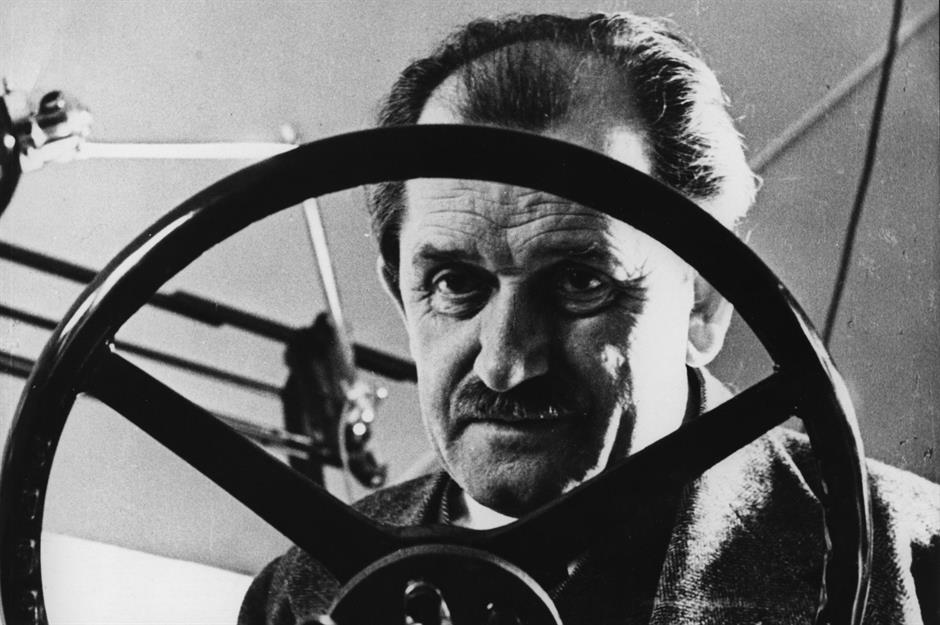
Ferdinand Porsche was a visionary engineer who left an indelible stamp on the automotive world and was pivotal in shaping the modern motorcar. Beyond founding the luxury marque that bears his name, he designed the iconic Volkswagen Beetle and was responsible for several groundbreaking innovations.
However, Porsche's reputation is tarnished by his involvement with the Nazi regime and his role in World War II. Read on to discover the complex life and controversial legacy of Ferdinand Porsche.
All dollar amounts in US dollars
Ferdinand Porsche is born in Maffersdorf, Austria-Hungary

Ferdinand Porsche was born on 3 September 1875 in this house in the northern Bohemian town of Maffersdorf (now the borough of Vratislavice nad Nisou). Part of the Austro-Hungarian Empire at the time, today it's located in the Czech Republic.
The third child of master panel-beater Anton Porsche and his wife Anna, Porsche and his family belonged to the ethnic German Deutschböhmen community, later known as the Sudeten Germans. A super-bright child, Porsche was fascinated by mechanics from an early age and showed a strong aptitude for all things technology-related.
Ferdinand Porsche's apprenticeship and obsession with electricity
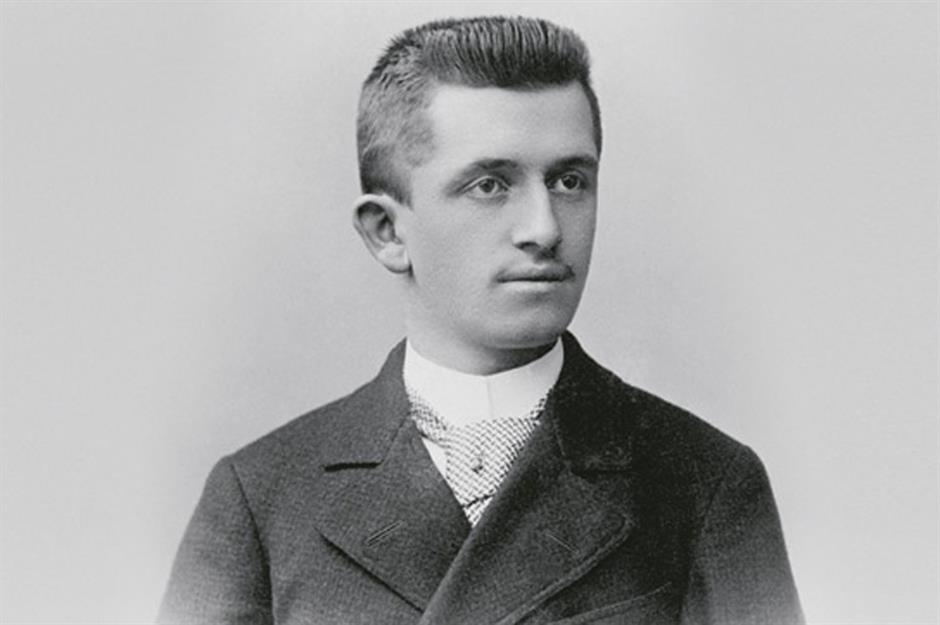
In 1888, tragedy struck when Porsche's older brother was killed in an accident in his father's workshop. Following his sibling's death, Porsche became heir to the family business. Thrust into the new role, he left school in 1889 aged 14 and began a panel-beating apprenticeship under the watchful eye of his father.
While mastering the craft, Porsche was drawn to the new wonder of electricity after seeing it in action at a spinning mill near his home. Much to his father's dismay, the teenager began tinkering and stunned locals when he fitted his ice skates with homemade battery-powered lights.
Ferdinand Porsche's electric education and first job
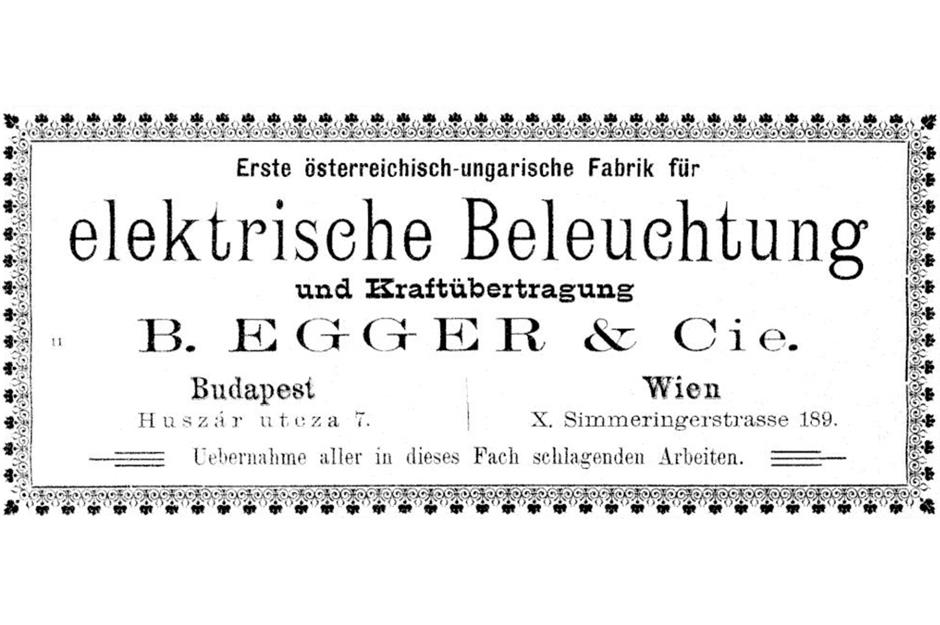
Porsche's mother was far more encouraging and convinced her husband to let their gifted son take evening classes in electrical engineering at the state-run trade college in nearby Reichenberg (now Liberec). In 1893, Porsche showcased his skills by wiring the family home with electric lights and an electric doorbell. At the time, the spinning mill was the only other building in Maffersdorf boasting these marvels.
Later that year, the 18-year-old tech whiz landed a mechanic job at the electrical firm Vereinigte Elektrizitäts-AG Béla Egger in Vienna. With his father's blessing – by this point, the Porsche patriarch was immensely proud of his son's work with electricity – Porsche departed for the Austrian capital. His younger brother eventually took over the family business.
Ferdinand Porsche impresses at Béla Egger
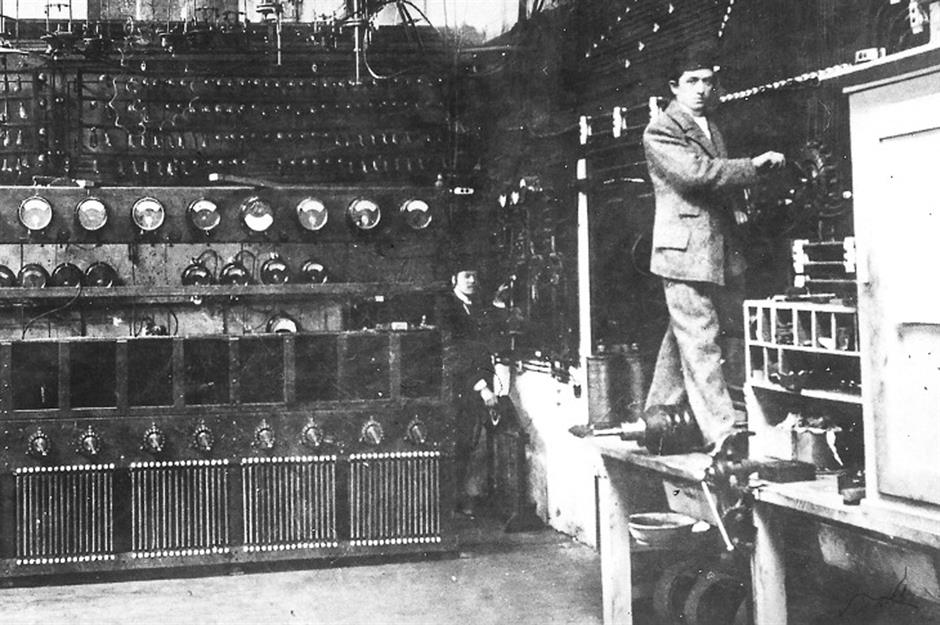
Porsche's talent impressed his bosses at Béla Egger. He often snuck into lectures on electricity at the Vienna University of Technology, and he used his new-found knowledge to build one of the world's first e-bikes, which he used to travel between his job, the university, and his lodgings.
By 1898, Porsche had risen up the ranks to become the company's head of testing. That same year, a pivotal commission for an electric engine came in from Viennese coachbuilder Ludwig Lohner of Jacob Lohner & Company. An early proponent of motoring and clean energy, Lohner railed against the fact the city air “was being mercilessly ruined by the petrol engines that now occur in such large numbers.”
The Egger-Lohner C.2 Phaeton aka the Porsche P1
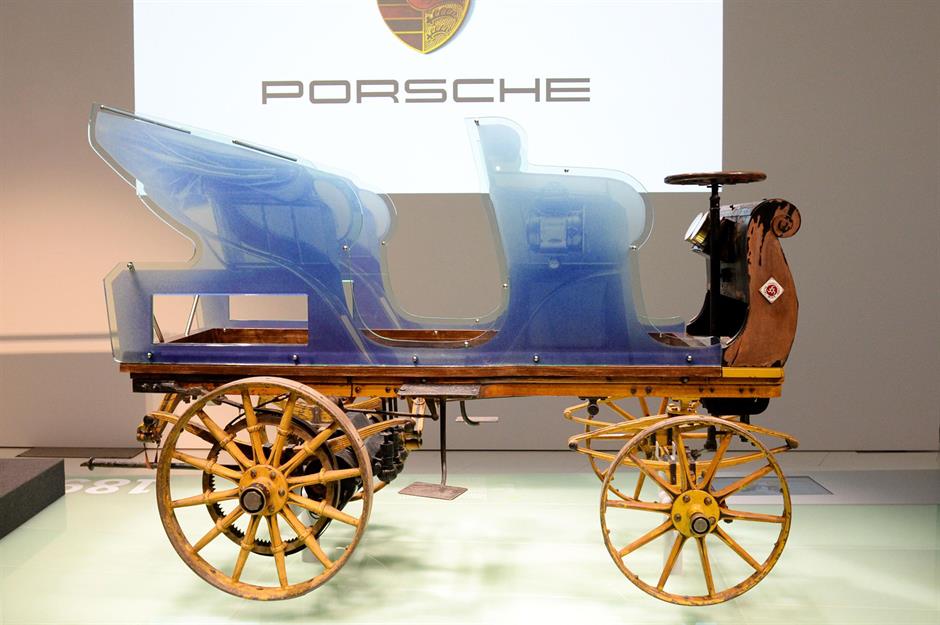
Porsche successfully created his first all-electric car, the Egger-Lohner C.2 Phaeton, aka the P1. Powered by an octagonal electric motor mounted on the rear axle of a Lohner coach, the firm reported this early EV could hit a top speed of 16 mph (26 km/h), a record-breaking feat for the time.
Bowled over by the invention, Lohner headhunted the talented engineer. Porsche left Béla Egger in early 1899 and started working directly for Jacob Lohner & Company. The firm was the official supplier to the Austro-Hungarian Dual Monarchy and other European royal houses.
The Lohner-Porsche Elektromobil
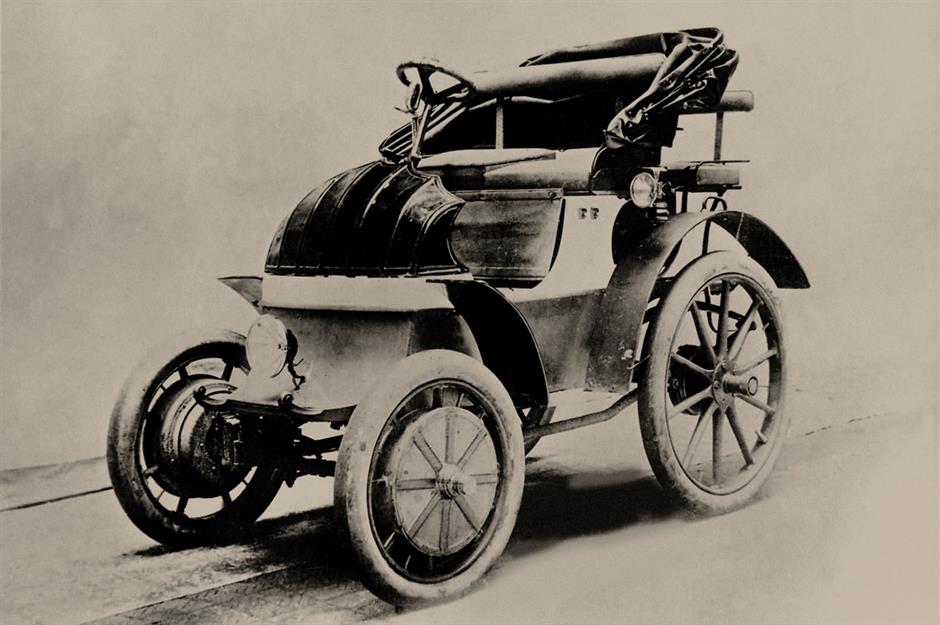
Later in 1899, Porsche piloted the P1 to victory in a 25-mile (40 km) electric vehicle race at the Berlin International Motor Show, finishing a decisive 18 minutes ahead of the runner-up. The P1 was also judged the most energy-efficient of all the vehicles taking part.
Back in Vienna, Porsche set about fine-tuning the electric wheel-hub motor technology he had developed at Béla Egger. The innovation dramatically reduced friction and boosted efficiency by over 80%. It debuted in the first Lohner-Porsche Elektromobil, which was fitted with hub motors on the front wheels. Boasting a top speed of 23 mph (37 km/h), the vehicle was unveiled at the 1900 Paris Exposition, where it caused a sensation.
The world's first four-wheel drive car
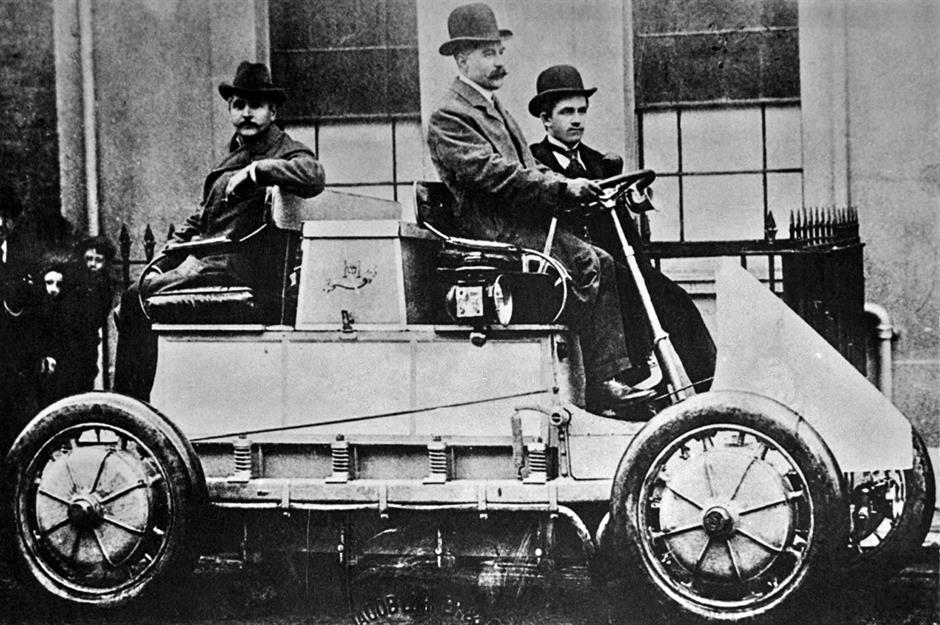
British coachbuilder and motoring enthusiast Earnest Hart placed the first order for a custom-built Lohner-Porsche Elektromobil. Porsche got to work, producing a souped-up version with an electric motor and brakes in each wheel. The world's first four-wheel drive automobile, it was christened La Toujours Contente ("The Always Satisfied"), a cheeky nod to the fastest car at the time, La Jamais Contente ("The Never Satisfied").
The cumbersome lead-acid battery packs, which weighed several tons, proved its Achilles heel. With Porsche at the steering wheel, La Toujours Contente took part in the UK's first national electric car trials in Chislehurst in the autumn of 1900. The weighty sports car floundered in the difficult weather conditions, and Porsche had to bow out midway. The vehicle's range also left a lot to be desired.
The world's first hybrid car
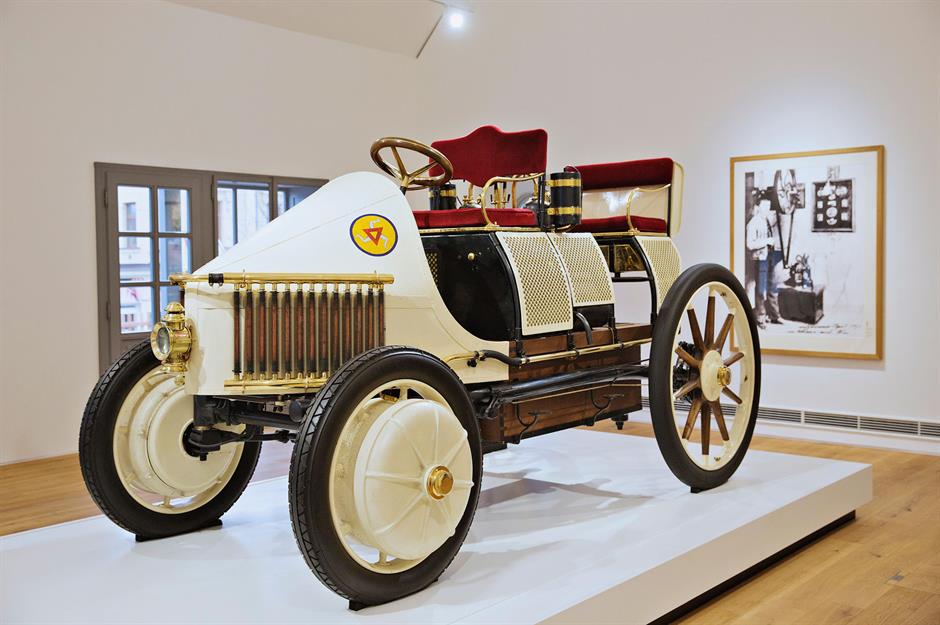
To address La Toujours Contente's shortcomings, Porsche quickly devised an ingenious solution: the world's first hybrid vehicle (pictured). Dubbed the Semper Vivus, Latin for "Always Alive", it featured two Daimler petrol engines, which powered the electric motors via a generator and served as mini charging stations on longer journeys, significantly extending the range.
In 1901, a lightweight mass-market version of the hybrid vehicle called the Lohner-Porsche Mixte went into production. Driven by Porsche, the Mixte won the Exelberg Rally near Vienna.
Ferdinand Porsche's ill-fated royal fan
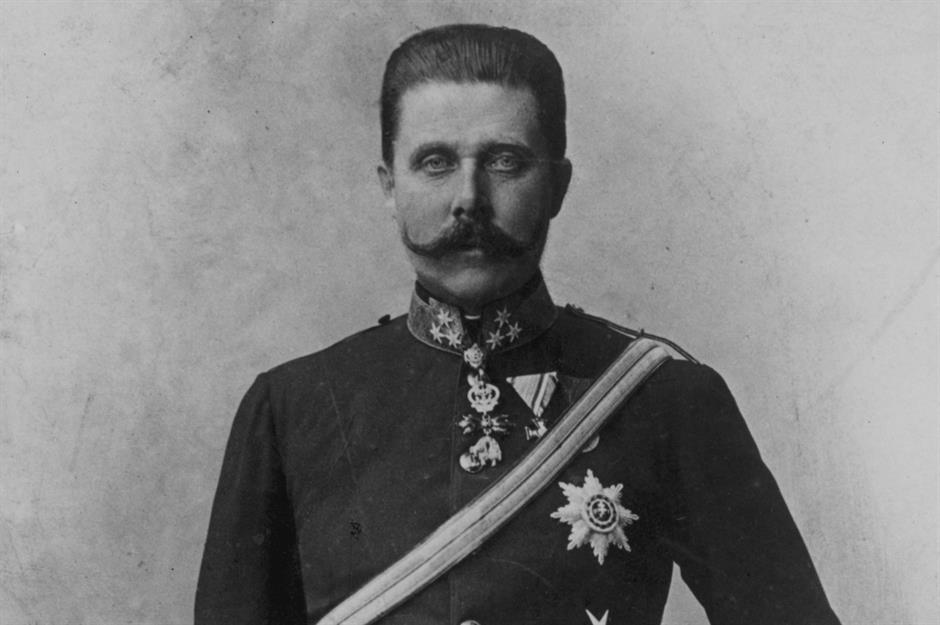
In 1902, Porsche was drafted into military service as a reserve infantry soldier and had the opportunity to demonstrate the Mixte to the Austro-Hungarian army. The demo impressed the elite, including Archduke Franz Ferdinand, whose infamous assassination in 1914 would trigger World War I. Porsche became the royal's chauffeur, an honour that enhanced his reputation.
In 1903, Porsche married Aloisia Johanna Kaes in his hometown of Maffersdorf. The couple went on to have two children: Louise and Ferdinand Anton Ernst, nicknamed Ferry. Two years later, Porsche was awarded the prestigious Pötting Prize for being Austria's most outstanding automotive engineer.
The Lohner-Porsche Mixte flops
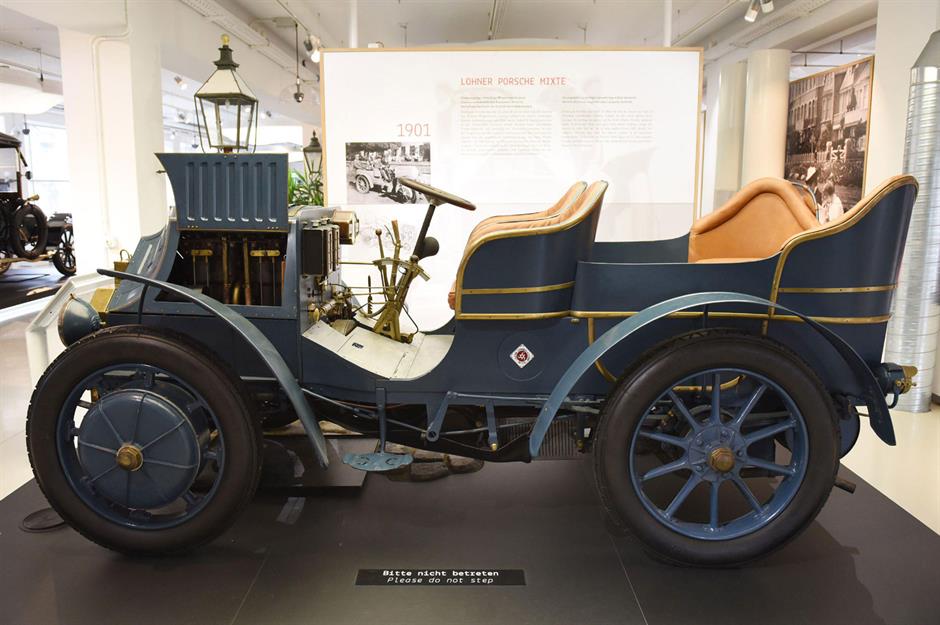
Despite the regal endorsement and top accolade, the Austro-Hungarian military failed to put in a big order for the Mixte, and it sold poorly. Over five years of production, only 65 cars sold, each with a hefty starting price of 14,000 kronen, around $158,000 (£122k) in today's money. In fact, the short client list – which included Austrian retail magnate Julius Meinl, German chocolate mogul Ludwig Stollwerck, and British banker Baron Nathan Rothschild – reads like a who's-who of European tycoons of the time.
Adding to the negatives, Porsche entered into a patent dispute with Lohner. Tensions came to a head, and in 1906, he decided to leave the firm.
Ferdinand Porsche's visionary innovations

Porsche's electric cars ultimately failed, and he gave up on green technology in favour of petrol-powered internal combustion vehicles. However, NASA revived Porsche's electric wheel-hub technology for the Lunar Rover, launched on the Moon's surface during the Apollo 15 mission in 1971.
The wheel-hub motor is also the go-to for modern electric bikes. All things considered, Porsche was years ahead of his time when it came to electric vehicle technology.
Ferdinand Porsche's early Austro-Daimler triumphs
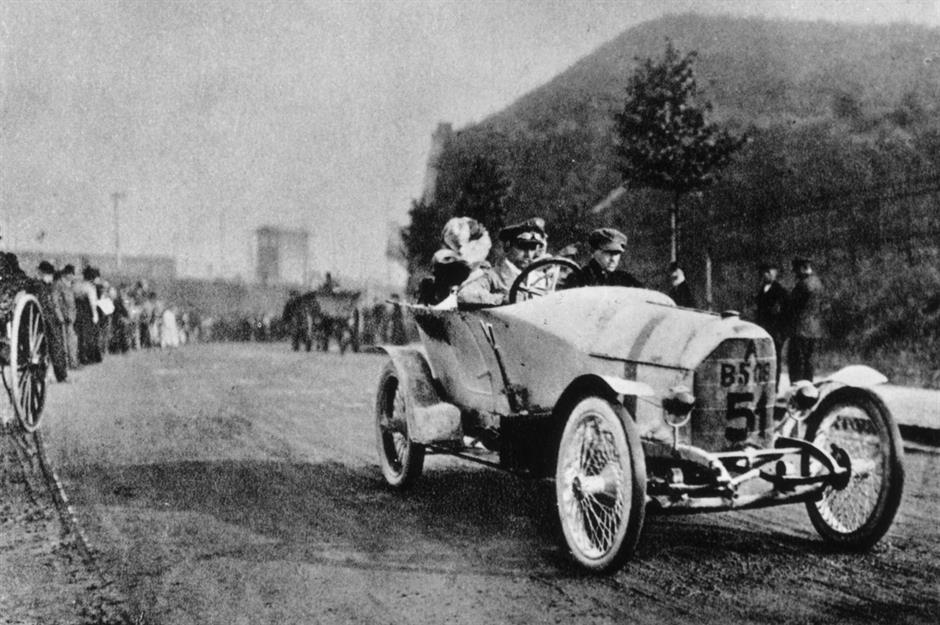
After leaving Lohner in 1906, Porsche landed the position of technical director for automaker Austro-Daimler in Wiener Neustadt, and swiftly produced the Maja 24/28 racing car.
In 1910, he coasted to victory in that year's Prince Heindrich Tour, a precursor to the German Grand Prix, in a streamlined tulip-shaped Austro-Daimler of his design. The model, nicknamed the Prince Henry, is widely considered the first proper sports car, with a blistering top speed of 82 mph (132 km/h).
Porsche also finally won some lucrative contracts from the Austro-Hungarian military. In 1911, Austro-Daimler teamed up with mortar maker Škoda to produce artillery tugs for the army using Porsche's Mixte hybrid system. The vehicles were later used to devastating effect during World War I.
Ferdinand Porsche excels at Austro-Daimler
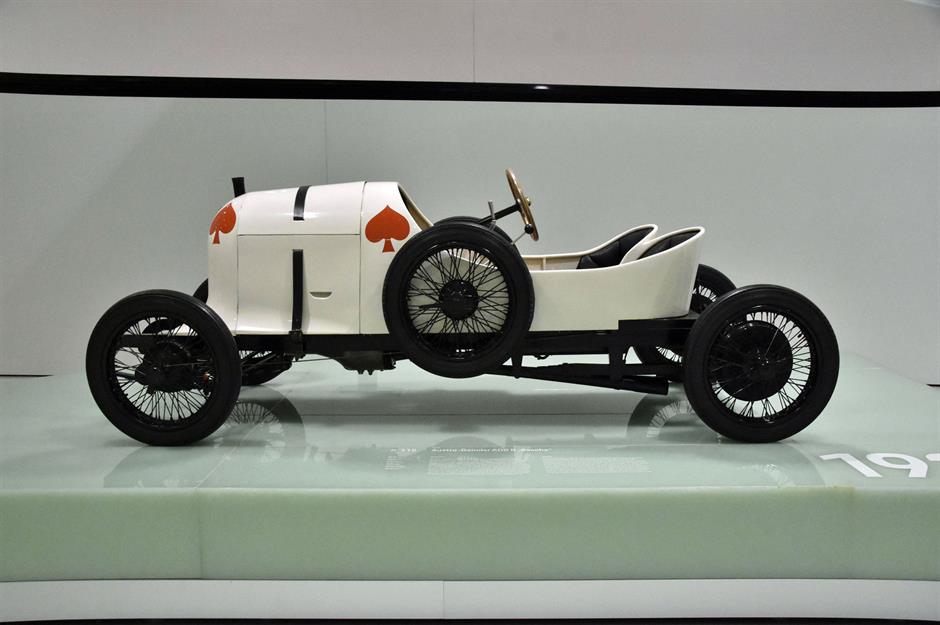
From 1911 to 1914, Porsche excelled at Austro-Daimler. His Kaiserwagen became a symbol of luxury, and his Alpenwagen dominated the 1911 Austrian Alpine Rally.
Due to World War I, the firm shifted its focus to military vehicles. Porsche was appointed general manager and given an honorary doctorate (he was later awarded another, plus a professorship). Postwar, Porsche continued to innovate with the Austro-Daimler 14/35 model, building on the success of earlier designs.
Porsche's brilliance truly shone in the 1920s. His 4400cc luxury car, the AD617, became a favourite among royalty. The subsequent Sascha ADS-R racing car (pictured) was also a triumph, winning numerous races, including the legendary Targa Florio in Sicily.
Ferdinand Porsche's Mercedes-Benz models
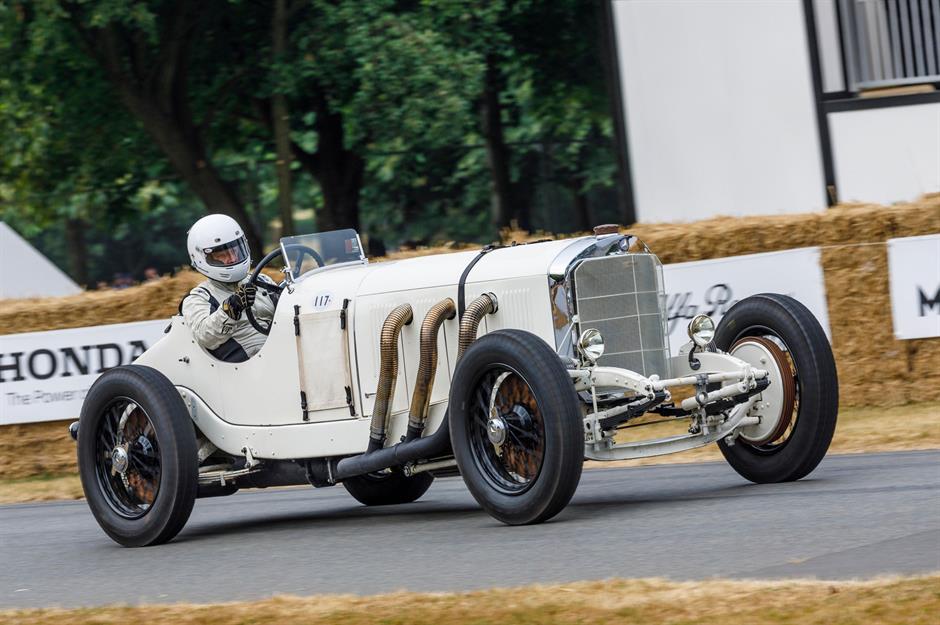
Despite his many successes at the company, professional differences led to Porsche's departure from Austro-Daimler and in 1923, he transitioned to Daimler-Motoren-Gesellschaft in Stuttgart.
As a board member and the head of design, Porsche was in a powerful position. But his status was undermined in 1926 when Daimler-Motoren-Gesellschaft merged with Benz & Cie to become Daimler-Benz (with all vehicles henceforth branded as Mercedes-Benz). Nonetheless, Porsche oversaw the completion of several massively successful racing cars, including the Mercedes-Benz Type S, SS, and SSK compressor cars.
However, the enormous expense of developing the vehicles was at odds with the newly merged firm's cost-cutting ethos. In 1928, after a showdown over one of his less successful vehicles, Porsche quit Daimler-Benz.
Ferdinand Porsche's brief stint at Steyr

Now 53 years old, Porsche was welcomed with open arms by Austrian manufacturer Steyr, taking over its automotive division.
He started work on a luxury model and a more affordable subcompact car (pictured), but his time at Steyr was cut short by the Wall Street Crash of 1929, which decimated Steyr's main shareholder. Strapped for cash and in serious trouble, the company had to let Porsche go after barely a year. With the Great Depression kicking in, automakers stopped hiring and Porsche was out of a job.
Ferdinand Porsche establishes his own firm
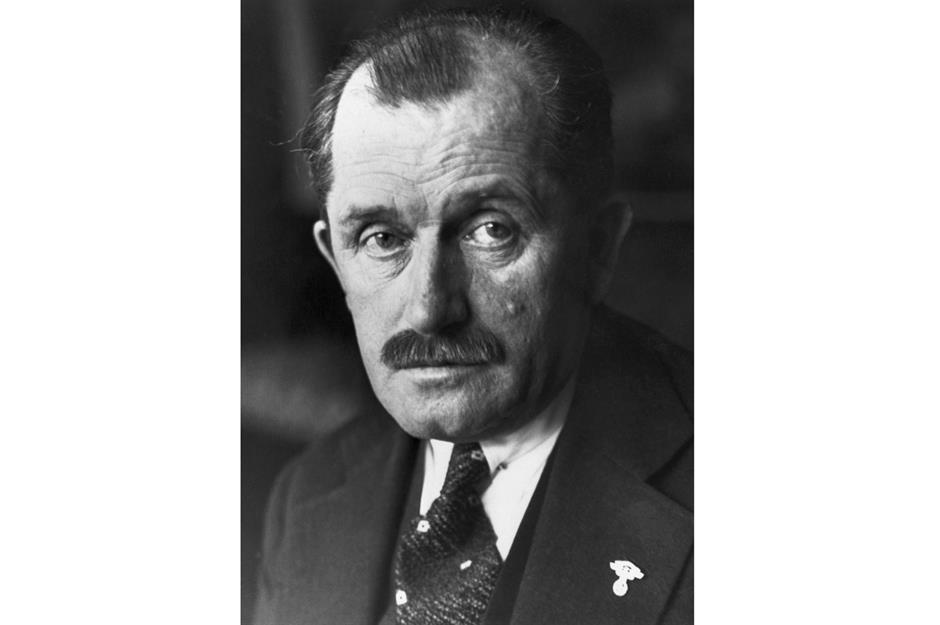
Porsche decided to go it alone, setting up his own auto design and consultancy firm in 1930 with the financial backing of his son-in-law, the lawyer Anton Piëch, and entrepreneur Adolf Rosenberger. It was formally established the following year as Dr Ing h c F Porsche GmbH, Konstruktionen und Beratungen für Motoren und Fahrzeugbau ("Dr Porsche, Design and Consulting Services for Motors and Vehicles").
Headquartered at Kronenstraße 24 in Stuttgart, the company started with a workforce of between 12 and 20, including Porsche's son Ferry, who would later take over as boss.
Porsche's first major order
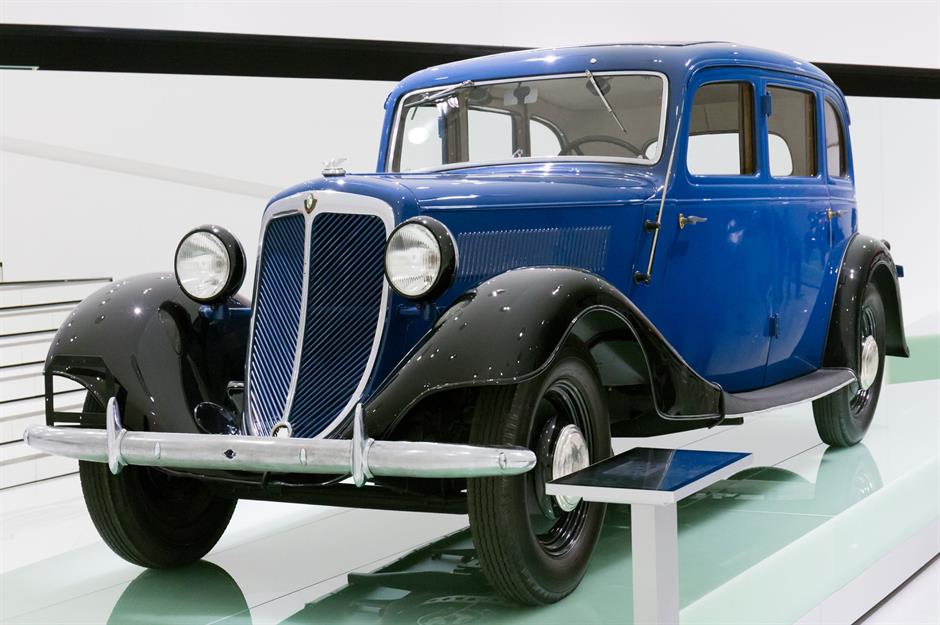
Porsche's first major order set the stage for one of the most iconic vehicles of all time. Not long after his startup got off the ground, Porsche was commissioned by automaker Wanderer to design a smaller, more affordable sedan for the middle classes.
Porsche was intrigued by the idea, and with the global economy in the doldrums, developing a lower-cost vehicle seemed a wise business move. The result was the six-cylinder Wanderer W21/22, aka the Porsche Type 7.
The budget Porsche Type 12 for Zündapp
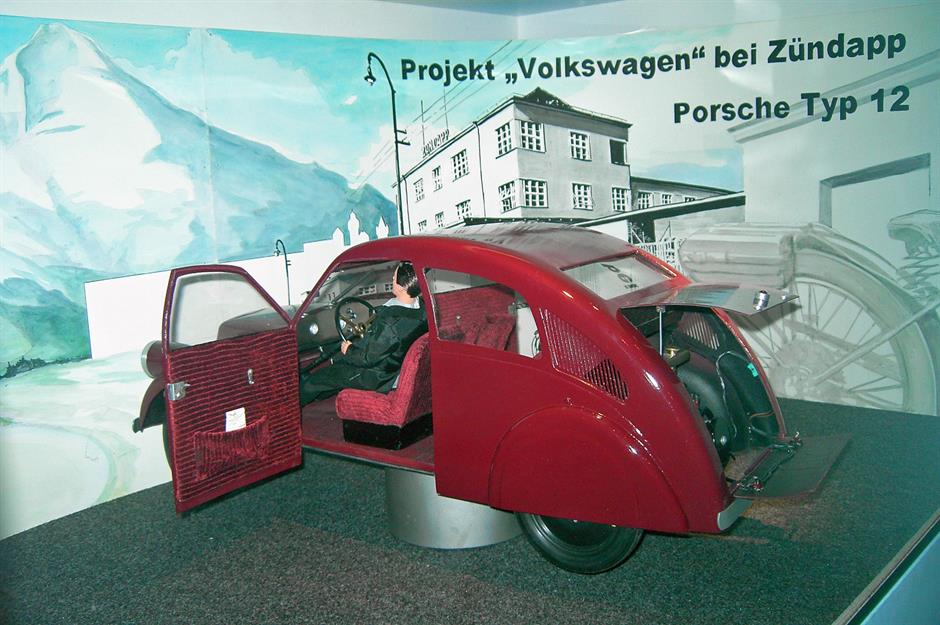
Meanwhile, Porsche was developing an even cheaper car that had the potential to bring motoring to the wider public, not just the well-off. In 1931-1932, his firm was commissioned by motorcycle manufacturer Zündapp to design a small, aerodynamic car, an "Everyman's Automobile" ("Auto für Jedermann") that even those of modest means could afford.
Porsche delivered the goods with the Porsche Type 12, which looked something like a cross between a Volkswagen Beetle and Citroën 2 CV, but Zündapp abandoned the project when its motorcycle business picked up. However, the idea of a smaller motor car that could be sold to those on smaller budgets was widely pursued in the industry at that time.
Ferdinand Porsche designs the precursor to the Volkswagen Beetle
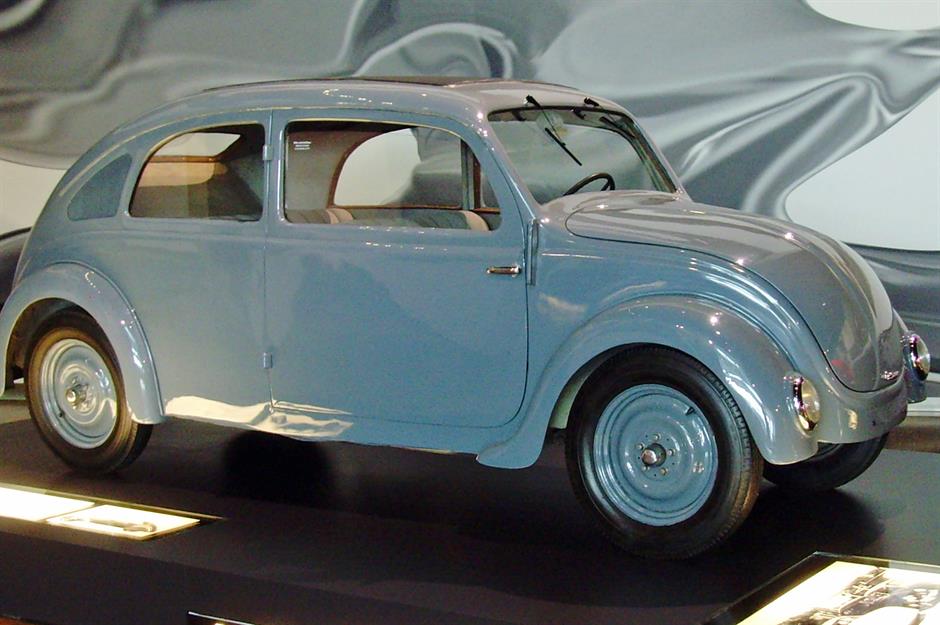
Incredibly, Porsche was courted in 1932 by the leader of the USSR, Josef Stalin, who offered him a plum contract to head the Soviet auto industry and develop a budget car for its people. After a trip to the USSR and much consideration, Porsche declined, a decision that would eventually lead him into the orbit of another dictator.
In 1933, Porsche offered the small-car project developed for Zündapp to motorcycle maker NSU. Porsche increased the size and fine-tuned the design, adding more curves. The Porsche Type 32, the precursor to the Volkswagen Beetle, was born. But it too never made it past the prototype stage.
Hitler's plan for a "People's Car"

Adolf Hitler was appointed Chancellor of Germany in 1933. Within weeks, he unveiled his ambitious pet project: a "People's Car" ("Volkswagen") to motorise the nation. The Volkswagen would be a cornerstone of Hitler's vision for Germany, which included the construction of a vast network of Reichsautobahn highways. Porsche was the natural choice to bring the car to life.
In 1934, the veteran automaker met with Hitler and the pair struck up a friendship. Years later, Ferry Porsche wrote that his father was one of only six men In Germany who dared speak their mind to the Führer. Porsche proposed an easily repairable aerodynamic vehicle with space for a family of five. It would reach a top speed of 62 mph (100 km/h) and could be adapted for military use. Hitler was thrilled with the proposal but insisted the Volkswagen retail for no more than 1,000 reichsmarks, around $8,700 (£6.7k) in today's money.
Porsche creates the Type 60 prototype

Porsche duly accepted the commission, though with some trepidation given the cost constraints. With assistance from the RDA (the German Automobile Manufacturers Association), his firm developed the first Volkswagen prototype, the VW 38 (or Porsche Type 60), in 1935, based on the Porsche Type 32. Other prototypes followed, with Hitler showing great interest in each iteration.
While Porsche was reaping the rewards from the Nazi regime, his Jewish business partner Adolf Rosenberger was facing a starkly different reality. As discrimination against Jews turned to out-and-out persecution, Rosenberger was pushed out of the firm, sent to a concentration camp, and eventually had to flee Germany.
Hitler orders the construction of the VW plant and the first Volkswagen is launched
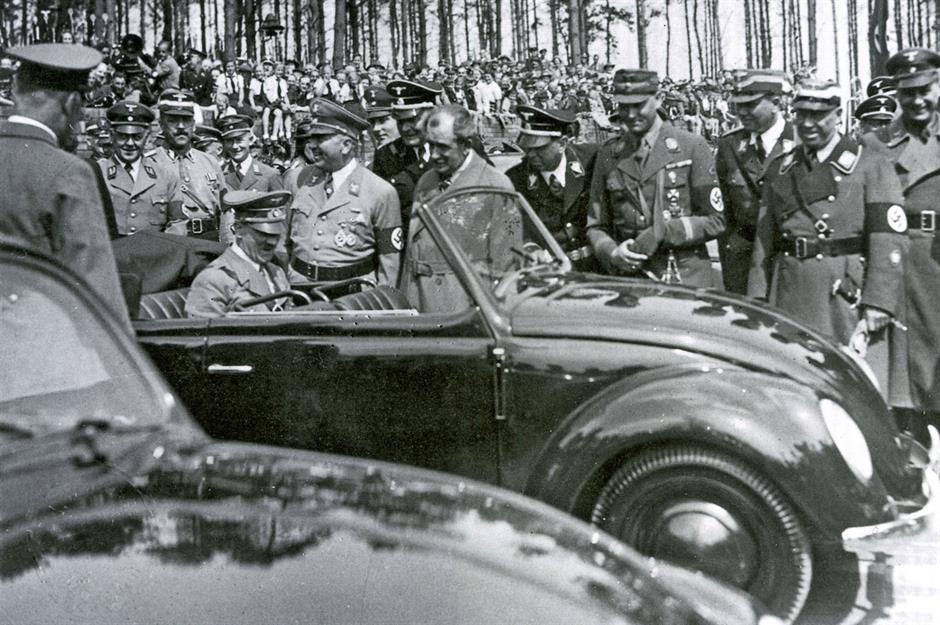
Hitler ordered one of the Porsche Type 60 prototypes, the V3, into production, but the RDA protested against the sub-1,000 reichsmark price. This infuriated the Führer, who transferred the entire project to Deutsche Arbeitsfront, the German Labour Union. In 1937, the Volkswagen company was officially formed. The following year, the developing car was renamed the KdF-Wagen after the union's leisure organisation Kraft durch Freude ("Strength through Joy").
Also in 1938, a dedicated plant and planned city for the construction of the vehicle was founded near Wolfsburg Castle in northern Germany. It was initially called the KDF City but was renamed Wolfsburg after World War II. Mass production for the first-ever retail Volkswagen, the Type 1, later nicknamed the Beetle, would have to wait until after the war.
Meanwhile, Porsche had joined the Nazi Party and the SS, Hitler's notorious paramilitary organisation, reinforcing his close ties with the Nazi regime.
Porsche's 1930s racing prowess
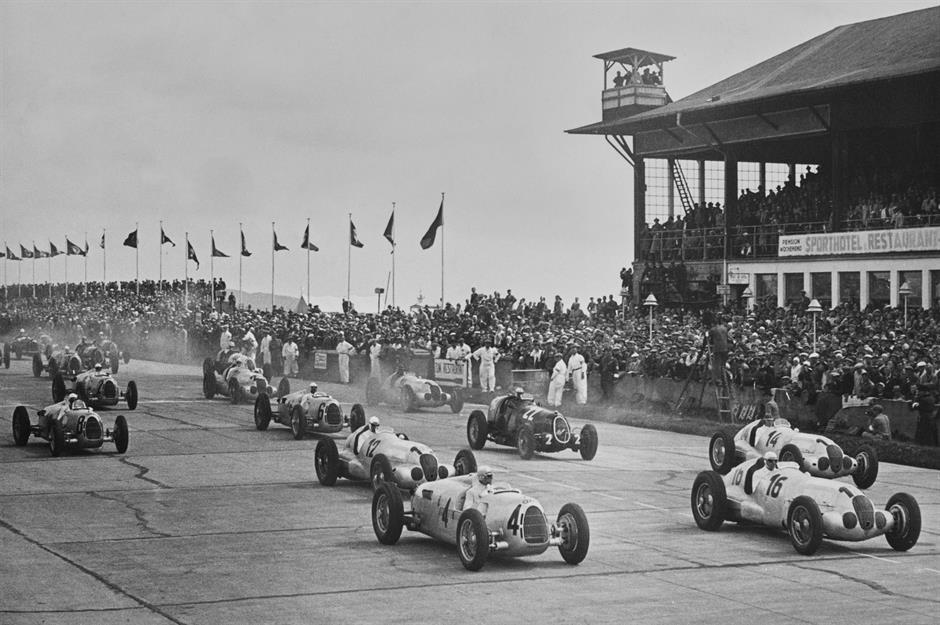
The Volkswagen wasn't Porsche's only major success during the 1930s. In 1933, the firm started developing racing cars for the newly formed Auto Union, which comprised Audi, DKW, Horch, and Wanderer.
Hitler wanted German vehicles to be the fastest in the world, so racing was positively promoted and bankrolled by the Nazi regime. Porsche's Auto Union cars won race after race during the rest of the 1930s, with Daimler-Benz's Mercedes-Benz Silver Arrows their only real rivals. At the end of the decade, Porsche produced the first-ever model under its own auspices, the Porsche 64. Only three were made, but the car was a tantalising taste of things to come.
Porsche's controversial wartime activities

During World War II, Porsche concentrated on military production. By 1945, only 630 civilian Volkswagens had been produced – mainly for use by Nazi party members – while 52,000 units of the car's all-terrain military version, the Kübelwagen, and 15,584 of the amphibious Schwimmwagen had left the production lines.
Porsche also produced tanks and helped develop the Elefant self-propelled gun and V-1 flying bomb, known to the Allies as the Doodlebug. Like other major German firms, Porsche relied on forced labour during the conflict. More than 15,000 prisoners of war and concentration camp inmates were forced to work for the company, making up 80% of its wartime headcount.
Ferdinand Porsche's later years
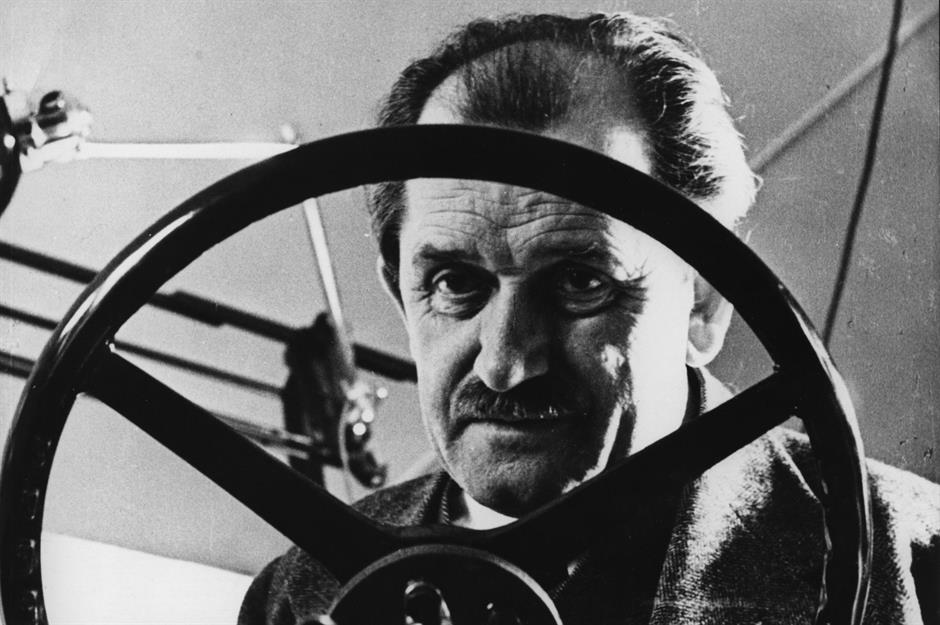
The end of World War II marked a tumultuous period for Porsche. Along with Ferry and his son-in-law Anton Piëch, he was arrested by French authorities and imprisoned for his role in the Nazi war effort. Thanks to his sister Louise, Ferry was released after six months, but Porsche and Piëch languished in jail. Ferry kept the company afloat with a contract from Italian automaker Cistitalia, and using its proceeds, he was able to bail out his father and Piëch in 1947.
In the twilight of his life, Porsche handed over the reins to Ferry and Louise. After suffering a stroke, the auto pioneer's health deteriorated dramatically in the winter of 1950, and he died in Stuttgart on 30 January 1951.
Volkswagen's remarkable rise
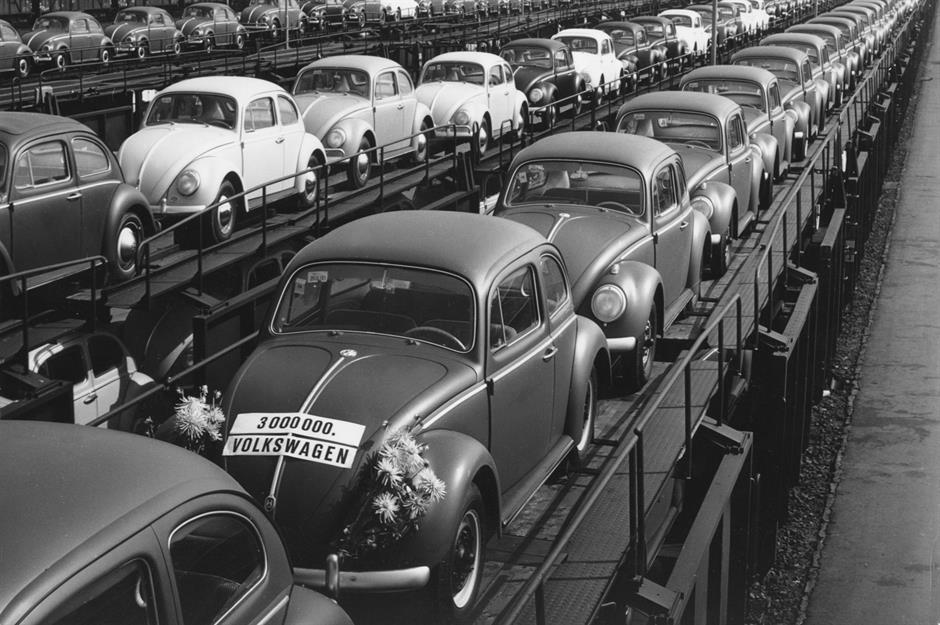
As for Volkswagen, the firm and its Wolfsburg plant lay in ruins at the end of World War II. Under allied trusteeship, it was saved by British Major Ivan Hirst and rebuilt by West German engineer Heinrich Nordhoff. Under West German government ownership postwar, the company was privatised in 1960, becoming Volkswagen Group.
By 1972, the Beetle had surpassed the Model-T as the best-selling car of all time. The group's journey has been marked by expansion and diversification, and today, Europe's leading carmaker is home to an array of top brands, including Audi, Bentley, Lamborghini, and Porsche.
Interestingly, Volkswagen owns Porsche AG, the manufacturer, but the Porsche-Piëch family controls the entire group through the holding company Porsche SE. Last year, Volkswagen Group pulled in revenues of $356 billion (£270bn), while Porsche AG generated $44.7 billion (£34.5bn).
Porsche's phenomenal ascent
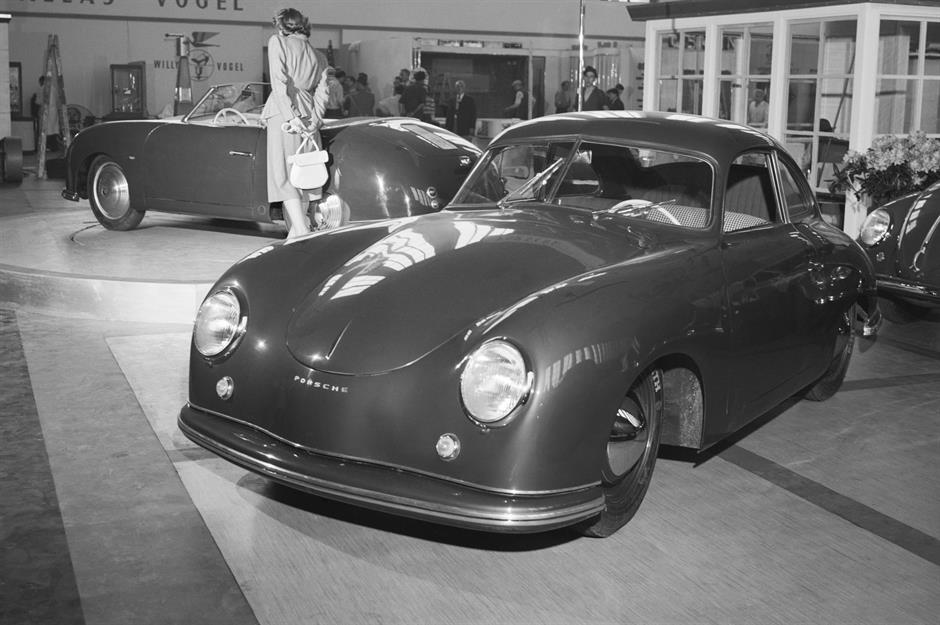
Rescued by Porsche's children Louise and Ferry, the eponymous family firm debuted its first-ever production car, the Ferry-designed 356 (pictured), in 1948. But it was the company's signature 911 sports car that became the backbone of its success. Introduced in 1963, it sold in vast numbers.
Porsche went from strength to strength in the 1970s as racing triumphs enhanced its brand image. The firm created a lifestyle brand producing sunglasses, pens, and other Porsche-branded items. The marque's reputation for luxury was cemented in the 1980s when Porsche became the car brand of choice for the era's aspirational yuppies. Since then, the company has diversified into premium SUVs and EVs.
Ferdinand Porsche's impact on popular culture
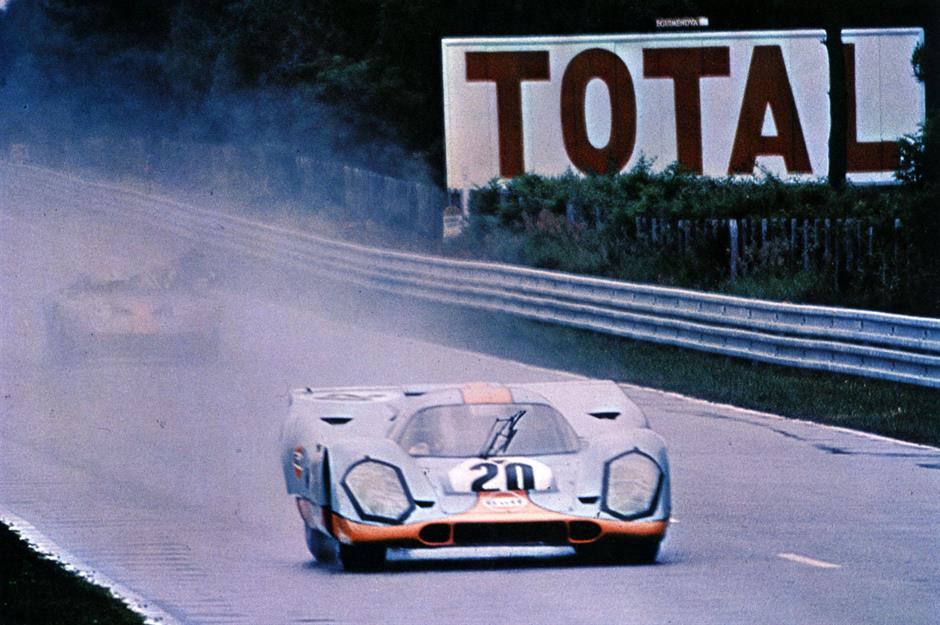
Porsche's impact on global popular culture has been profound. Synonymous with the 1960s counterculture movement, the Volkswagen Beetle has been referenced in songs by The Beatles, The Who, and Pink Floyd. It also played a starring role in countless classic movies, from the Herbie films to Annie Hall and Footloose.
Other Porsche vehicles have had a strong cultural impact too, appearing in song lyrics, movies, ads, and video games. Famous film Porsches include the 928 featured in Scarface, Top Gun's classic Porsche 356A Speedster, and the 928 that appeared in another 1980s Tom Cruise film, Risky Business.
That particular Porsche last sold for almost $2 million (£1.6m) in 2021. Incidentally, the most expensive Porsche of all time is a 917k that starred in the 1970 Steve McQueen film Le Mans (pictured) and won the titular race that year. It went under the hammer for a staggering $14 million (£10.8m) back in 2017.
The Porsche-Piëch family's business acumen and enormous net worth
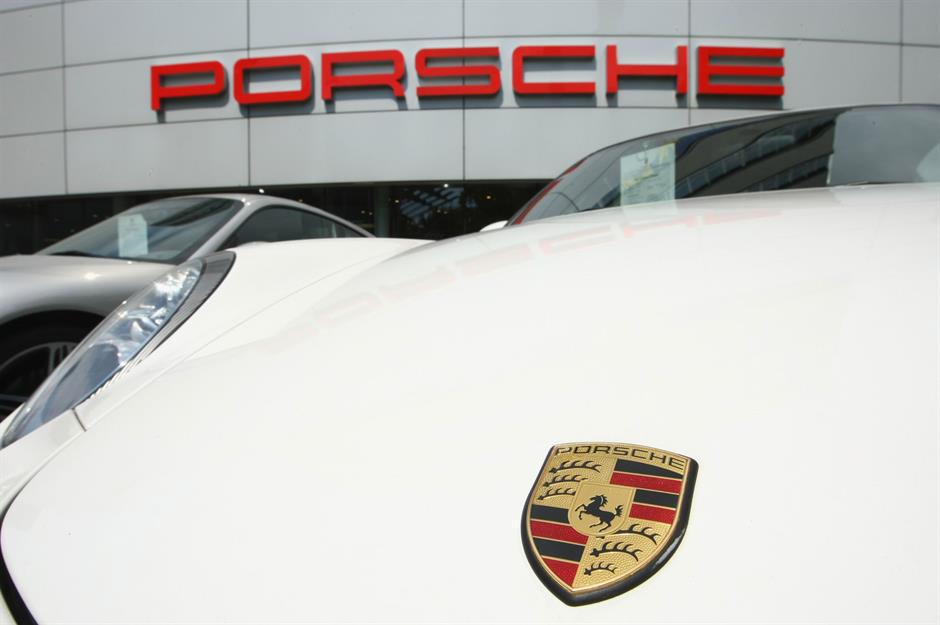
The Porsche-Piëch family has been shrewd over the years, maintaining control of Porsche and gaining control of the Volkswagen Group, which its members audaciously pulled off in the late 2000s. As you might imagine, the family is very rich indeed.
One of the wealthiest families in Germany, the Porsche-Piëches are worth around $22 billion (£17bn) based on the value of Porsche SE, but some internet estimates peg their fortune as high as $55 billion (£42.5bn). Prominent living members include Ferry's son Wolfgang Porsche, the chairman of Porsche SE's supervisory board.
Ferdinand Porsche's complex legacy
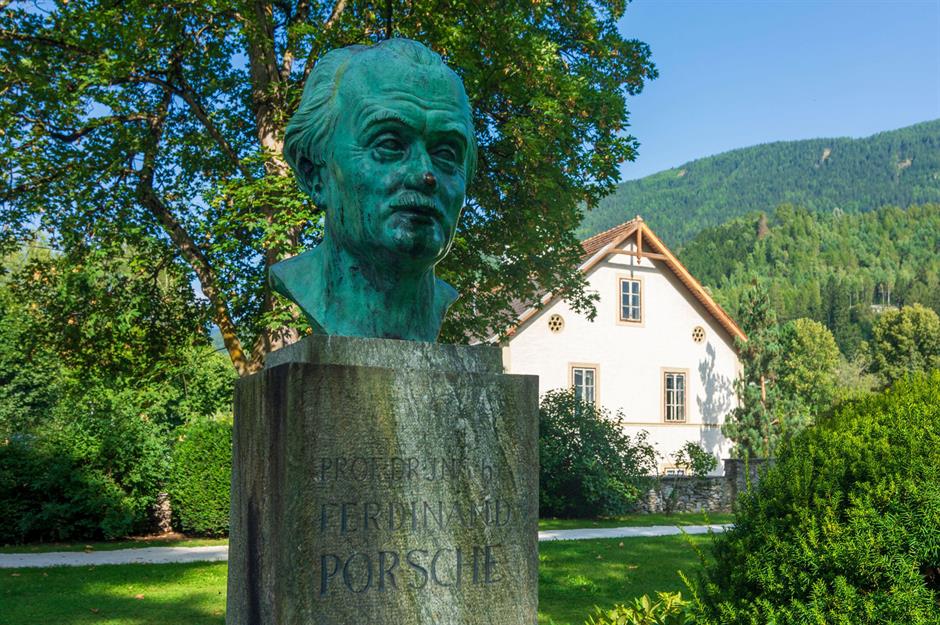
Porsche's game-changing impact as an auto pioneer has been honoured extensively. The motoring genius was inducted into the International Motorsports Hall of Fame in 1996 and declared the Car Engineer of the Century in 1999. But controversy persists over his links to the Nazi Party and wartime activities.
There was a fierce backlash in Porsche's Czech hometown when a museum dedicated to its most famous resident opened in 2010. Meanwhile, the Austrian city of Linz recently renamed its Porsche Street Wittgenstein Street (after the Vienna-born philosopher Ludwig Wittgenstein) as part of a "denazification" drive.
Now discover the real story behind the Ferrari family fortune
Comments
Be the first to comment
Do you want to comment on this article? You need to be signed in for this feature
Most Popular
Features How Michael Jackson's children boost their bank balances